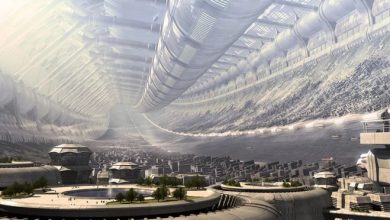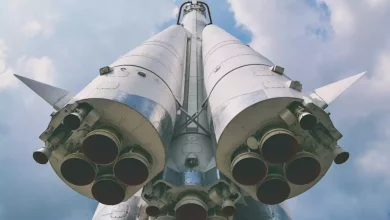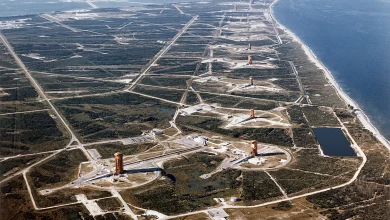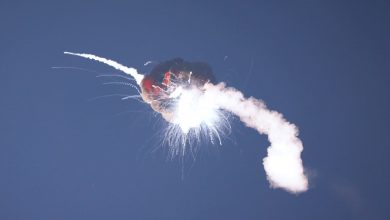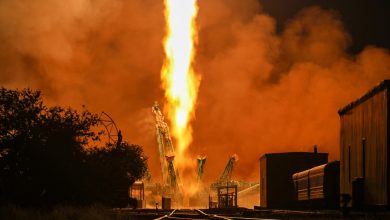
A Virgin Galactic manned shuttle has made a rocket-powered flight from New Mexico to the fringe of space.
The VSS Unity’s rocket motor sent the ship and two pilots toward space as the company moves towards offering tourist flights to the edge of the Earth’s atmosphere. A live feed by NASASpaceFlight.com showed the rocket ship accelerating upward, estimated a top altitude of at least 50 miles and confirmed a landing later via radar.
It was a crucial milestone for the company as it forges toward offering tourist flights to the edge of the Earth’s atmosphere.
Virgin Galactic founder Sir Richard Branson confirmed in a Twitter post that the two pilots and a research payload belonging to Nasa had reached space. He also says that the flight and landing bring the roughly 15-year-old venture close to commercial flights for tourists.
Virgin Galactic says those flights could begin next year.
Delighted to be on the flightline to watch @VirginGalactic’s first human spaceflight from the majestic Spaceport America @Spaceport_NM #UNITY21 pic.twitter.com/FcpCxJcjqS
— Richard Branson (@richardbranson) May 22, 2021
The spacecraft reached Mach 3 (three times the speed of sound) and attained a maximum altitude of 55.45 miles (89.2 kilometers) before beginning the trip back down to Earth, Virgin Galactic representatives wrote in a postflight update Saturday. (Where space actually begins is a matter of some debate. Some people recognize the “Karman Line” at 62 miles, or 100 km, as the boundary. But NASA and Air Force personnel get their astronaut wings if they get at least 50 miles, or 80 km, above Earth.)
Unity lifted off beneath the wing of its carrier plane, VMS Eve, around 10:35 a.m. EDT (1435 GMT; 8:35 a.m. local time in New Mexico). About 50 minutes later, at an altitude of 44,000 feet (13,411 meters), Eve dropped Unity, which then fired up its onboard rocket motor and powered itself to suborbital space.
Pilots C.J. Sturckow and Dave Mackay brought the space plane down for a runway landing at about 11:45 a.m. EDT (1545 GMT; 10:45 a.m. local time), wrapping up the suborbital flight. No other people were aboard the six-passenger Unity today, though the vehicle did carry some scientific payloads as part of NASA’s Flight Opportunities program.

“Today was just an incredible step in the right direction,” Sir Richard told The Associated Press shortly after the flight landings. “It tested a lot of new systems that the teams have been building and they all worked.”
Virgin Galactic CEO Michael Colglazier said at least two more test flights lie ahead — the next with four mission specialist passengers in the cabin. “The flight today was elegant, beautiful,” Mr Colglazier said. “We’re going to analyse all the data that we gather on these flights, but watching from the ground and speaking with our pilots, it was magnificent. So now it’s time for us to do this again.”
The company is aiming for commercial operations to begin next year following testing and a few months of down time for maintenance and other upgrades. That testing will include a flight that will take Sir Richard to the edge of space later this year. The first powered test in New Mexico from Spaceport America was delayed repeatedly before Saturday’s launch.
In December 2020, computer trouble caused by electromagnetic interference prevented the spaceship’s rocket from firing properly. Instead of soaring toward space, the ship and its two pilots were forced to make an immediate landing.
While Virgin Galactic’s stock price ticked up this week with the announcement of the latest test being scheduled for Saturday, it was not enough to overcome the losses seen since a peak in February. Some analysts have cautioned that it could be a while before the company sees profits as the exact start of commercial operations is still up in the air.
Virgin Galactic is one of a few companies looking to cash in on customers with an interest in space. Elon Musk’s SpaceX will launch a billionaire and his sweepstakes winners in September. That should be followed in January 2022 by a flight by three businessmen to the International Space Station.
Jeff Bezos’s Blue Origin launched a new capsule in January as part of testing as it aims to get its programme for tourists, scientists and professional astronauts off the ground. It is planning for lift-off of its first crewed flight on July 20, the date of the Apollo 11 moon landing.
Virgin Galactic has reached space twice before – the first time was from California in December 2018. The company marked its second successful glide flight over Spaceport America last June. Preparations for the latest attempt included a maintenance review of the special carrier plane that flies the six-passenger spacecraft to a high altitude, where it is released so it can fire its rocket motor and make the final push to space.
The flights are designed to reach an altitude of at least 50 miles before the rocket motor is turned off and the crew prepares to re-enter the atmosphere and glide to a landing. As part of the return trip, a feathering system slows and stabilises the craft as it re-enters the atmosphere.
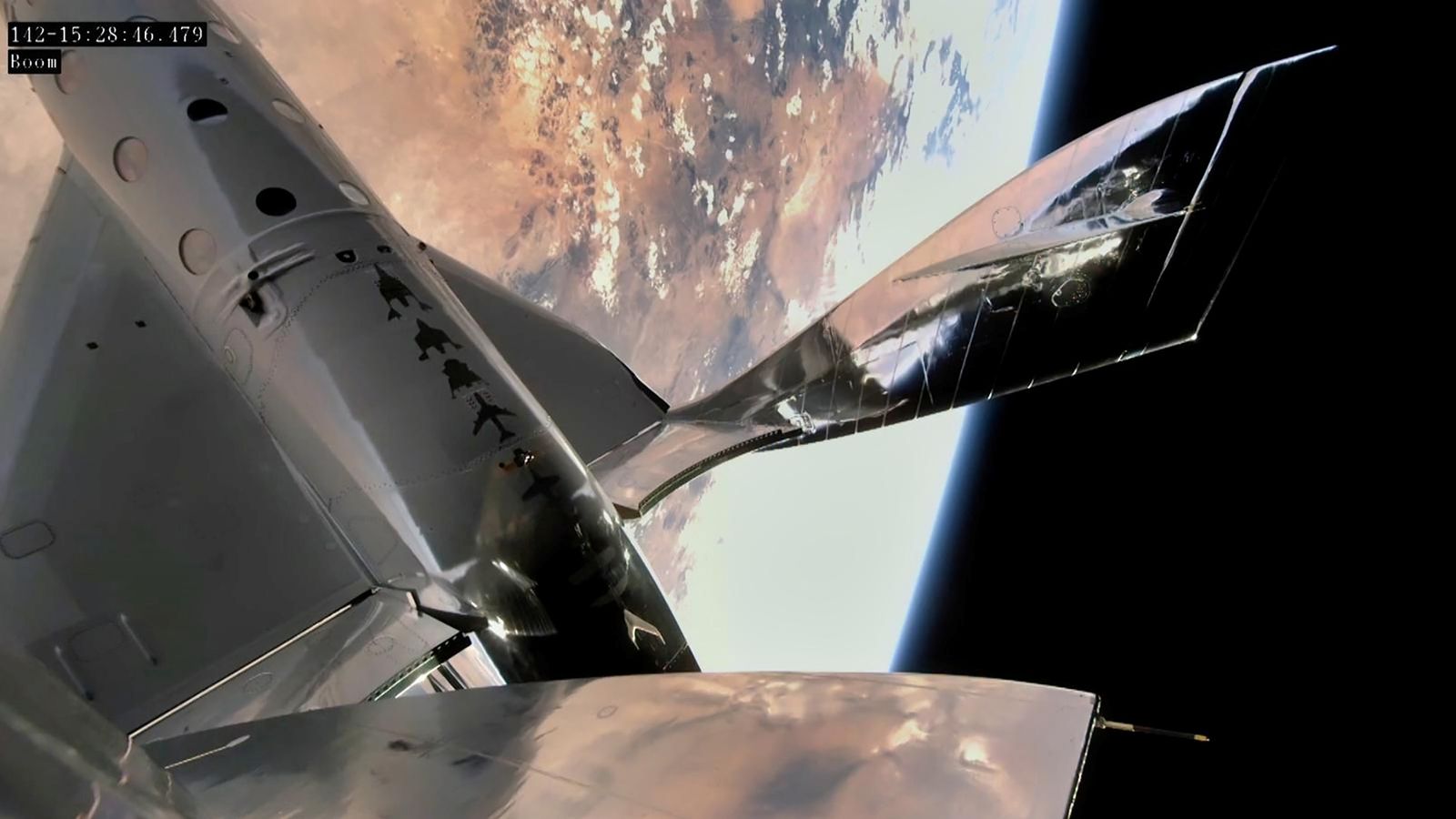
Unity had tried once before to perform spaceflight number three. That attempt, on Dec. 12, 2020, ended prematurely after the space plane’s motor failed to fire properly. Virgin Galactic traced the problem to electromagnetic interference, which caused a reboot of Unity’s onboard computer at the beginning of the ignition sequence. Implementation and validation of the required fix took time, pushing the second attempt back considerably.
Unity is in the final stages of its test campaign, but it’s not yet ready to carry paying customers. The space plane will likely conduct several more test flights. If those go well, commercial operations could begin in early 2022, Virgin Galactic representatives said recently.
That schedule would put Virgin Galactic behind its chief competitor in the suborbital space tourism business, Jeff Bezos’ Blue Origin. Blue Origin is auctioning off a seat for the first crewed spaceflight of its six-passenger New Shepard vehicle, which is targeted for July 20. It’s safe to say that New Shepard’s first customer will be wealthy; the auction was up to $2.8 million as of Friday afternoon (May 21).
It’s unclear how much Blue Origin will normally charge for a seat on New Shepard, which, unlike SpaceShipTwo, is designed to fly autonomously. More than 600 people have booked a ride on SpaceShipTwo, at a price (most recently) of $250,000 per seat.
While Virgin Galactic’s SpaceShipTwo Unity is the first space plane to launch humans into space from New Mexico, it’s not actually the first one to land in the state. In 1982, NASA’s space shuttle Columbia landed at White Sands Space Harbor to end the STS-3 mission, returning NASA astronauts Jack Lousma and Gordon Fullerton to Earth after an eight-day test flight, the third spaceflight for the shuttle program.

